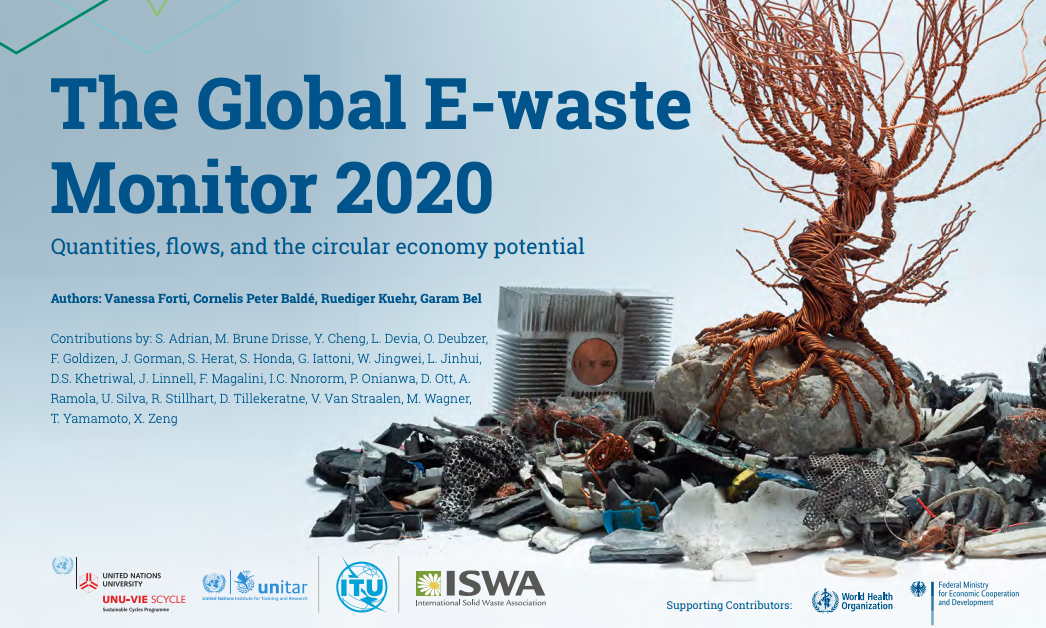
The UN’s Global E-waste Monitor 2020 report has found that the world dumped a record 53.6 million tonnes of e-waste last year, up 21 per cent in just five years. The new report also predicts global e-waste – discarded products with a battery or plug – will reach 74 Mt by 2030, almost a doubling of e-waste in just 16 years.
This makes e-waste the world’s fastest-growing domestic waste stream, fueled mainly by higher consumption rates of electric and electronic equipment, short life cycles, and few options for repair.
Only 17.4 per cent of 2019’s e-waste was collected and recycled. This means that gold, silver, copper, platinum and other high-value, recoverable materials conservatively valued at US $57 billion — a sum greater than the Gross Domestic Product of most countries – were mostly dumped or burned rather than being collected for treatment and reuse.
According to the report, Asia generated the greatest volume of e-waste in 2019 — some 24.9 Mt, followed by the Americas (13.1 Mt) and Europe (12 Mt), while Africa and Oceania generated 2.9 Mt and 0.7 Mt respectively.
“Even countries with a formal e-waste management system in place are confronted with relatively low collection and recycling rates,” the report said. China, with 10.1 million tonnes, was the biggest contributor to e-waste, and the United States was second with 6.9 million tonnes. India, with 3.2 million tonnes, was third. Together these three countries accounted for nearly 38% of the world’s e-waste last year.
While the overall damage done to the environment from all the un-recycled waste may be incalculable, the message from the report was conclusive: “The way in which we produce, consume, and dispose of e-waste is unsustainable.”
Picture Credit: Victorgrigas, India Victor Grigas 2011-13, CC BY-SA 3.0



